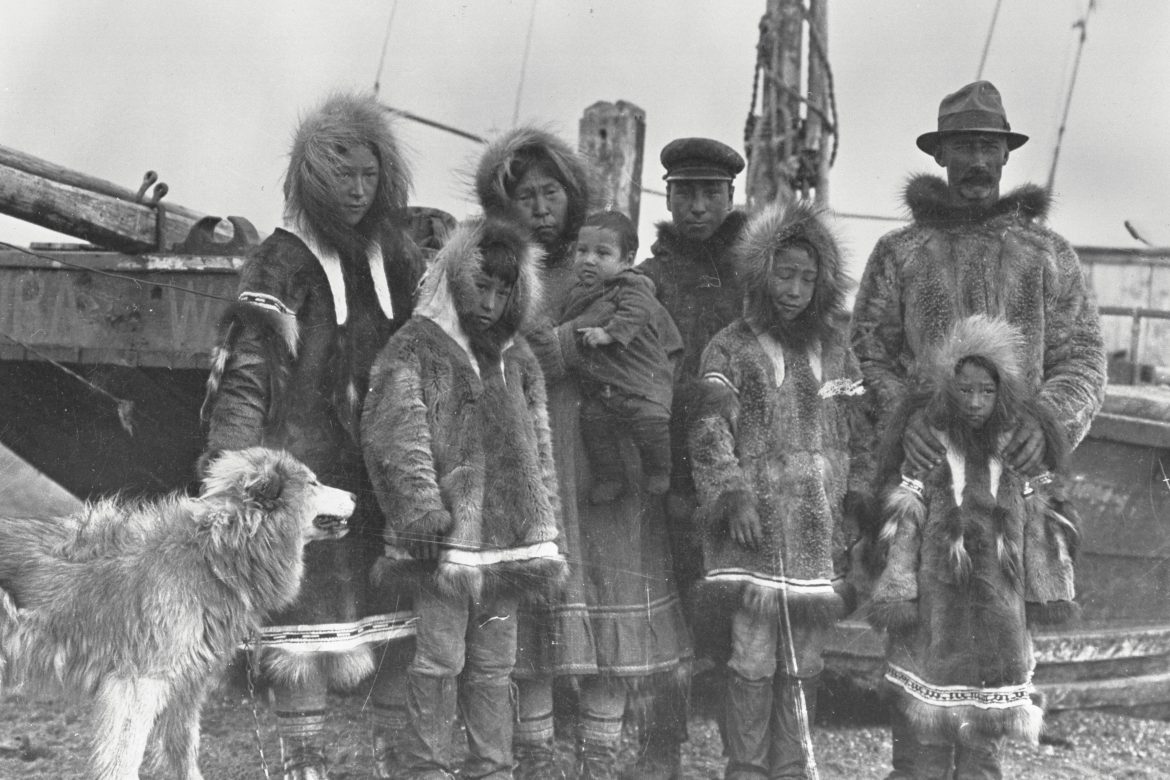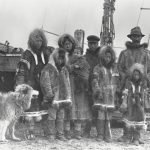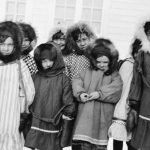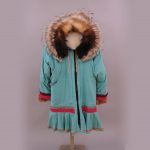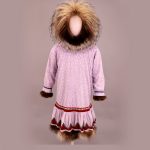1905
Qimnaq Klengenberg and the Mother Hubbard Parka
Qimnaq (Gremina, Kemnak) Klengenberg, an Inupiat from Port Hope Alaska, was born in 1878 and married Christian Klengenberg in 1893. She travelled with Christian across the Arctic Coast, establishing trading posts and supporting her husband as a fur trader in the first decades of the 20th century. She was described as “shrewd and energetic.” In 1905 Qimnaq and her family left Alaska for their slow move to the Eastern Arctic when Christian Klengenberg was hired to accompany an expedition to Herschel Island.
Qimnaq’s husband Christian had moved to Alaska from Denmark to “experience the ‘real’ Arctic”. Christian was a colourful character who traded with the Inuvialuit and Inuinnait people. His previous life experience included a murder charge, a trial, and acquittal in San Francisco in 1906. The shared legacy of Qimnaq and Christian consists of establishing a sizeable Arctic coast family of eight children whose descendants still are connected to the region.
Qimnaq’s most lasting impression in the north may have been her introduction of the Mother Hubbard style parka. The parka style can be traced to missionaries in Hawaii. The design includes a furred hood, often in a sunburst pattern, and a long cotton over-jacket with an interior lining of duffle wool, usually embroidered or with an applique design. This style was soon established as the sign of a successful fur trading family, as the cost of cotton was high. Qimnaq’s parka style continues to be a classic western Arctic female outer jacket worn over top of fur or duffle.
Qimnaq disappeared during a storm in 1931. Her lasting influence on the clothing style of the western Arctic, and the many Klengenbergs who remain in the area, confirm her place as one of the matriarchs of the Arctic Coast.
